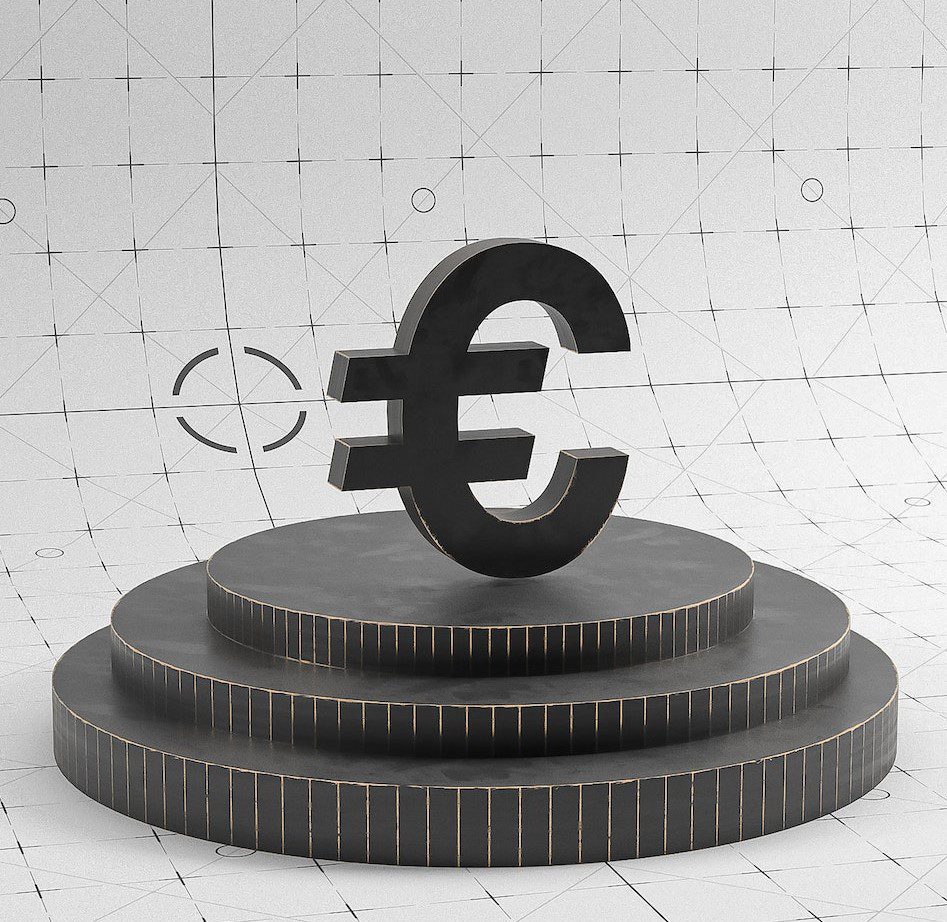This week´s Digital Euro announcement is generating a significant buzz in the financial world after the publication of the III Progress on the investigation phase of a digital euro report and confirming the intentation to move on to a subsequent project phase. Imagine having the Euro in a purely digital form, accessible through your smartphone or computer, just like the apps you use for online banking. This digital transformation of the Euro is poised to reshape the way we interact with money. It represents the next frontier in currency evolution, and its significance cannot be overstated. As we move further into the digital age, the European Union’s pursuit of a Digital Euro reflects a ground-breaking shift in the way we conceptualise and use currency. It’s more than just a technological upgrade; it symbolises a pivotal moment in the ongoing evolution of money and the financial systems that underpin our economies.
ECB Digital Currency
This ambitious endeavour is being led by the European Central Bank (ECB), which has been closely studying the feasibility and implications of such a transition. The move is driven by a desire to harness the benefits of digital currencies while maintaining regulatory control and oversight. While various forms of digital money already exist, a Digital Euro would be issued and backed by the ECB, making it a digital representation of the official Euro. This initiative is not merely a response to the growing popularity of cryptocurrencies like Bitcoin; it’s a strategic step to ensure the Euro remains a relevant and competitive currency in the digital era.
The significance of the Digital Euro extends far beyond the realm of traditional currency. It marks a profound shift in how we think about money and transact in the modern age. As traditional cash becomes increasingly replaced by digital forms of payment and finance, the Digital Euro represents an official acknowledgment of this transformation. It offers the potential for streamlined and more efficient financial transactions, greater financial inclusion, and enhanced security. Moreover, the emergence of a Digital Euro signals the growing influence of central banks in the digital currency landscape. It sets the stage for further innovations and discussions about the role of central bank digital currencies (CBDCs) in the global financial system. In essence, the development of a Digital Euro is a pivotal step towards a future where money, in all its forms, is fundamentally digital and seamlessly integrated into our daily lives.
The Evolution of Money: From Gold to Digital
The use of precious metals, particularly gold and silver, as currency has deep historical roots. These metals held intrinsic value due to their scarcity, durability, and aesthetic appeal. The idea of trading goods for gold formed the basis for currency systems in various ancient civilisations. Gold and silver coins were trusted mediums of exchange, symbolising wealth and stability. However, lugging around heavy bags of metal wasn’t the most convenient way to conduct transactions, and the need for more practical forms of currency led to a pivotal transition.
The transition from commodity-based money, like gold and silver, to fiat currency marked a significant shift in the world of finance. Fiat currency, unlike its predecessor, lacks intrinsic value. Instead, it’s valuable because governments declare it to be so, and people trust in this declaration. This change allowed for more flexibility in the money supply, which could be adapted to economic conditions. Fiat currency paved the way for the issuance of banknotes and coins that weren’t necessarily backed by precious metals but were readily accepted as valid forms of payment.
Banknotes
Physical banknotes and coins quickly gained popularity as a means of exchange due to their practicality. These physical representations of fiat currency were issued by governments and central banks. They provided a tangible way for individuals and businesses to engage in trade and transactions. The trust placed in these paper notes and metal coins, despite the lack of intrinsic value, demonstrated the power of a well-established and regulated currency system.
Electronic Money
The emergence of electronic money marked another milestone in the evolution of currency. Electronic money represented a shift from physical forms of currency to digital records. Initially, it was used for online purchases and transactions, laying the groundwork for further digital advancements in finance.
With the rise of the internet and digital technology, the financial landscape witnessed a transformation. The introduction of online banking and digital payment platforms allowed individuals to manage their finances, make payments, and conduct transactions from the comfort of their computers. Furthermore, the creation of cryptocurrencies, such as Bitcoin, represented a new breed of digital assets. These decentralised, blockchain-based currencies brought forth the idea of a currency not controlled by a central authority but maintained by a network of participants.
In recent years, mobile apps, online banking, and digital wallets have become an integral part of our daily financial lives. These technologies have streamlined the way we manage money, make payments, and conduct business. Mobile apps and digital wallets have made it possible to carry out transactions with a simple tap on a smartphone, making physical cash and even traditional bank cards less essential in our increasingly digital world.
The EU’s Move to a Digital Euro
The ECB is taking a major step into the digital realm by announcing its intentions to launch a digital version of the Euro, commonly referred to as the Digital Euro. This innovative initiative has sparked great interest and discussions among policymakers, economists, and financial experts. The Digital Euro represents a digital representation of the Euro, the official currency of the Eurozone. This move towards a digital currency reflects a broader global trend as central banks worldwide explore the possibilities and implications of digital currencies.
The motivations behind the ECB’s pursuit of a Digital Euro are multifaceted. First and foremost is the aim to enhance the efficiency of payments within the Eurozone. Traditional cross-border transactions, especially when involving multiple currencies, can be slow and costly. The Digital Euro seeks to address these issues, making cross-border payments quicker, more cost-effective, and accessible to all. Additionally, the rise of cryptocurrencies, such as Bitcoin and Ethereum, has added a new dimension to the global financial landscape. Cryptocurrencies offer an alternative to traditional currencies and are gaining popularity among users who value decentralisation and the security provided by blockchain technology. The introduction of a Digital Euro by a reputable central bank is a response to this challenge, offering a regulated and government-backed digital currency that combines the benefits of digitalisation with the stability of a fiat currency.
Benefits
The introduction of a Digital Euro carries several potential benefits for both individuals and the broader economy.
- It has the potential to increase financial inclusion, ensuring that more individuals have access to digital financial services.
- By providing an official digital currency, the ECB can offer an alternative to traditional bank accounts for those who are currently underserved by the banking system.
- A Digital Euro can significantly reduce transaction costs, particularly in cross-border and online transactions.
- It can enhance the security of digital transactions and protect against counterfeiting and fraud.
- The Digital Euro can also facilitate monetary policy implementation by providing a more accurate understanding of money flows and usage, ultimately benefiting the overall stability of the Eurozone’s financial system.
Challenges
However, the introduction of a Digital Euro also presents potential risks and challenges for its implementation and utilisation.
- Introducing the Digital Euro raises concerns about cybersecurity. It’s susceptible to hacking, phishing, and malware attacks, necessitating robust security measures and user vigilance.
- The Digital Euro’s traceability has privacy implications. Striking the right balance between user privacy and regulation is a complex challenge, demanding strict data protection and user privacy rights.
- The success of the Digital Euro hinges on user adoption and understanding. Educational initiatives are essential to familiarise people with digital currencies, making accessibility a key challenge.
- The Digital Euro’s direct holding option may disrupt traditional banks, potentially reducing deposits and impacting their lending capacity. Policymakers must carefully manage this transition to maintain a balanced financial ecosystem.
In conclusion, the advent of the Digital Euro represents a pivotal moment in the evolution of money and currency systems. The future of money is digital, and our ability to adapt, innovate, and secure this transition will define the financial landscape of tomorrow, not just in Europe but on a global scale. As we navigate this shift towards digital currencies, we find ourselves at the intersection of history, innovation, and global finance.






